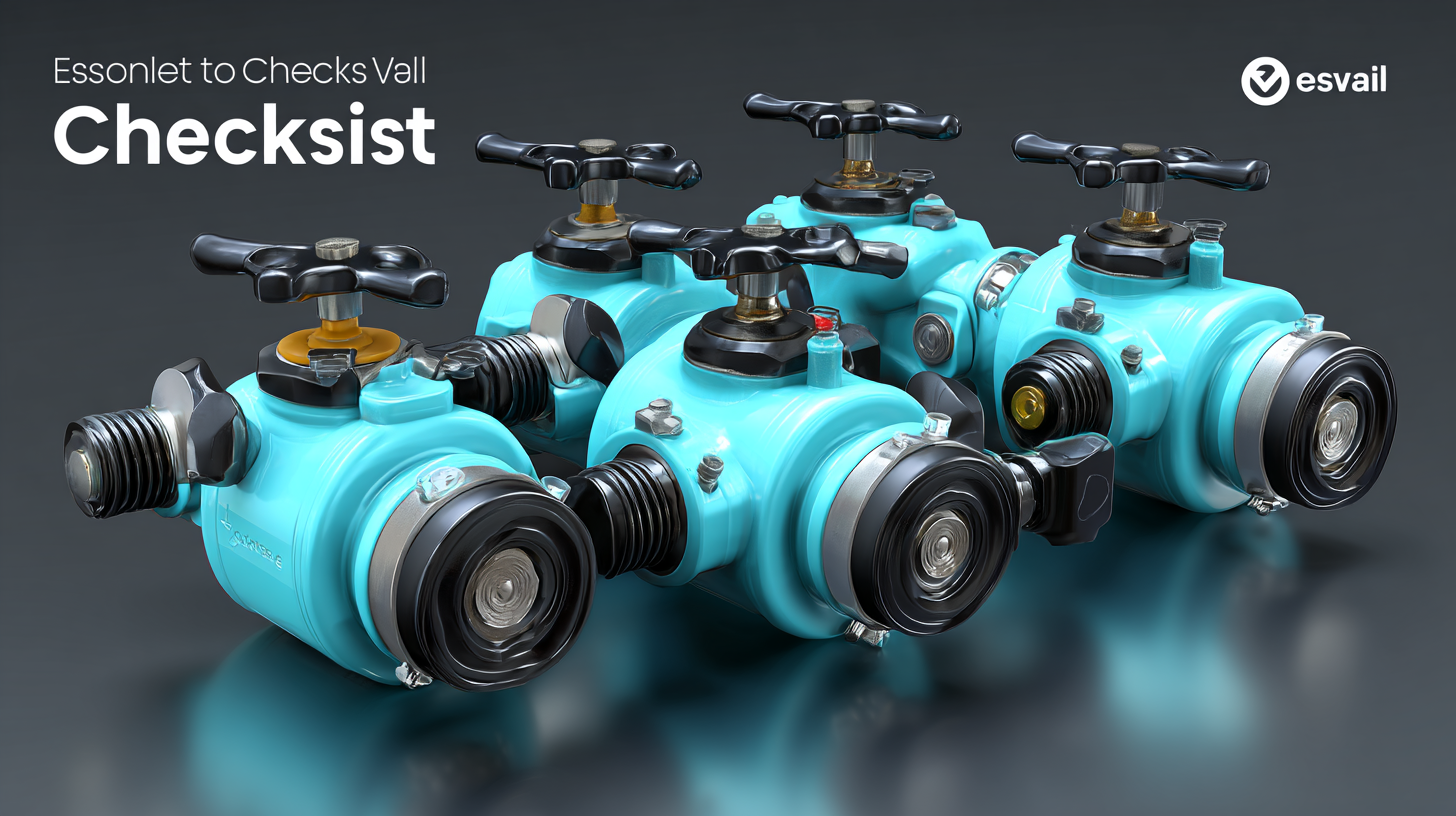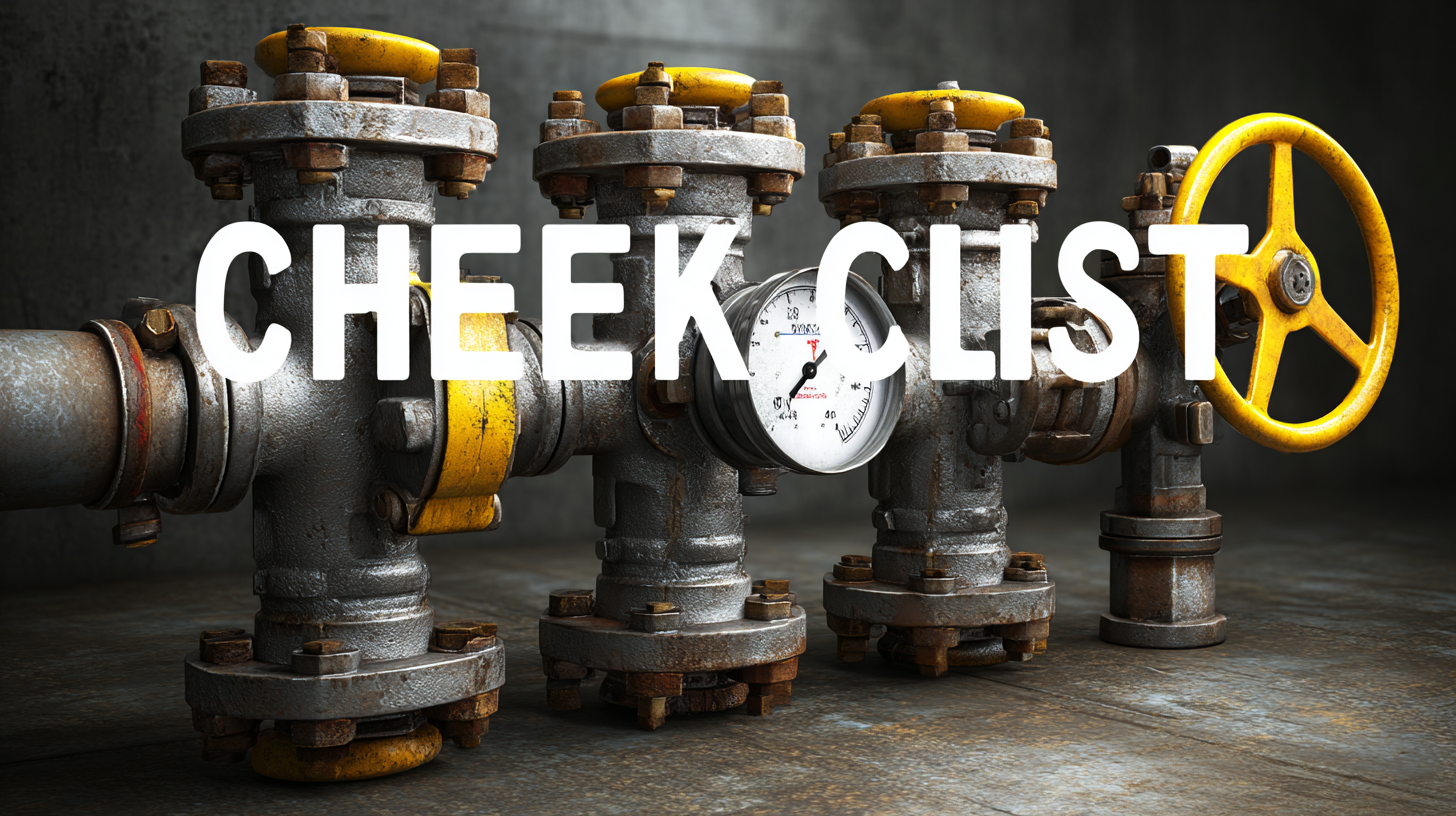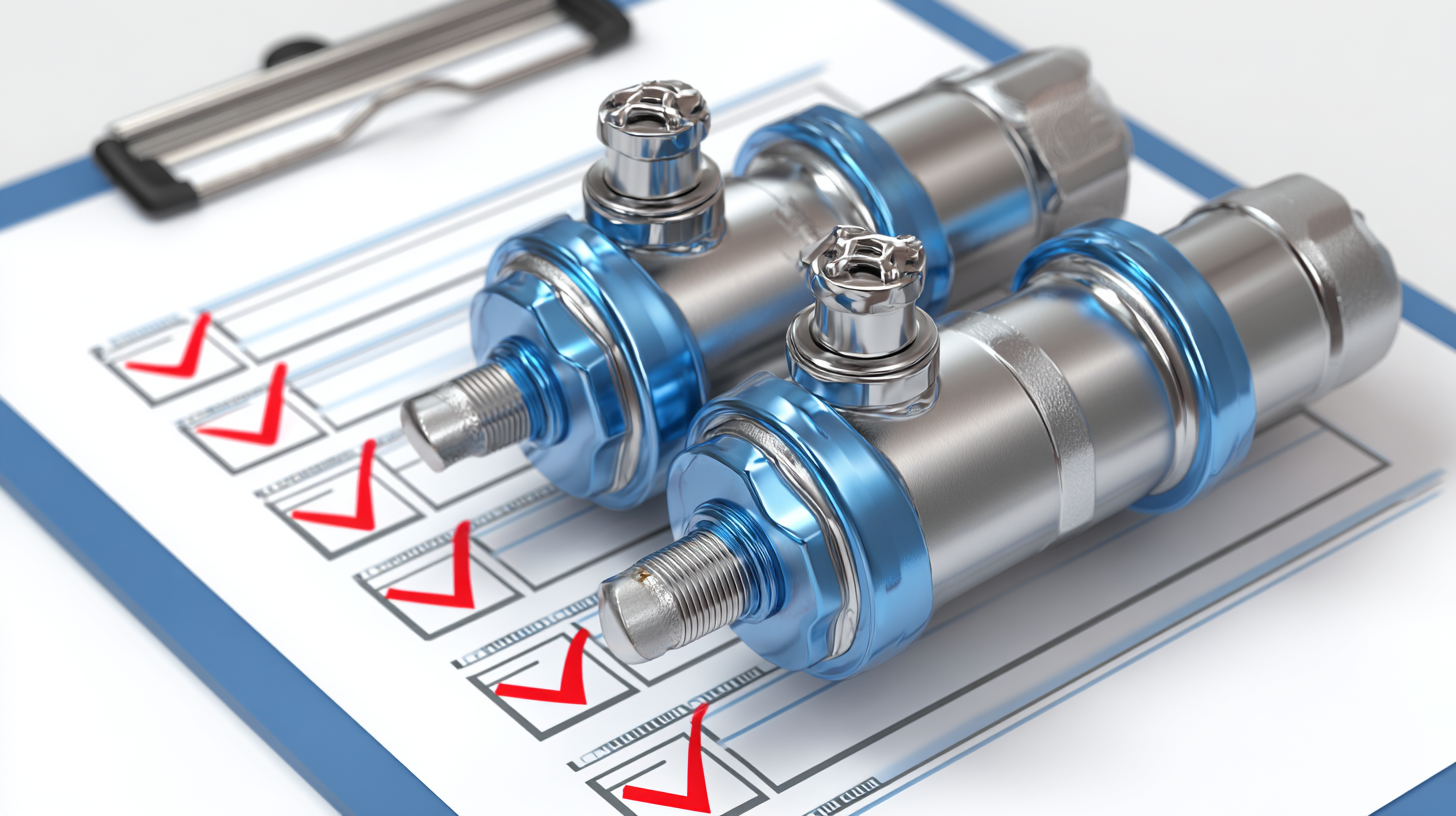
-
Home
-
Products
-
About Us
-
Application Cases
-
CLIENT & FACTORY
-
Test
-
News
-
Contact Us
Leave Your Message

In the realm of industrial fluid control, the selection of appropriate components is crucial for ensuring efficiency and reliability. Among these, Duplex Ball Valves have emerged as a critical choice due to their superior strength and resistance to corrosion, as highlighted in a recent industry report by MarketsandMarkets, which projects a steady growth in the global valve market, with a compound annual growth rate (CAGR) of 4.5% through 2026.
With applications spanning from
oil and gas to chemical processing, the demand for Duplex Ball Valves is on the rise, driven by their ability to withstand harsh operating environments.
This essential checklist will guide you through the key considerations in choosing the best Duplex Ball Valves for your projects, ensuring optimal performance and longevity while meeting the stringent demands of modern industrial applications.

When selecting duplex ball valves for your project, several critical factors must be considered to ensure optimal performance and longevity. Duplex stainless steel, known for its superior corrosion resistance and mechanical strength, is a preferred choice in various applications, particularly in the oil and gas industry, where exposure to harsh environments is common. According to industry reports, the demand for duplex stainless steel is projected to reach over 3 million tons by 2025, highlighting its significance in the sector.
One essential tip is to evaluate the valve's pressure and temperature ratings, which directly influence its application suitability. Ensure the valves are compliant with relevant standards, such as ASME and API, which provide guidelines for safety and reliability. Additionally, consider the valve's actuation mechanism and whether manual or automated controls best suit your operational needs, as this can greatly impact efficiency.
Another critical factor is the valve's size and design configurations. Proper sizing not only ensures the effective flow of fluids but also mitigates the risk of premature wear and tear. It's advisable to conduct flow calculations specifically tailored to your project's requirements. By paying attention to these parameters and staying informed on material advancements, you can make more informed decisions that enhance the performance of your infrastructure.
This chart represents the important factors to consider when selecting duplex ball valves for your project, rated on a scale from 1 to 10 based on their significance.
When selecting duplex ball valves for your project, it’s essential to understand the various types available to ensure you choose the most suitable option. Duplex ball valves are primarily made from duplex stainless steel, offering superior corrosion resistance and strength, making them ideal for challenging environments. The main types of duplex ball valves include full port, reduced port, and trunnion-mounted designs. Each type has specific advantages tailored to different applications and fluid dynamics, making it crucial to assess your project’s requirements carefully.
Full port duplex ball valves provide a larger diameter through the ball, allowing for minimal pressure drop and better flow rates, which is ideal for systems where maximum efficiency is required. In contrast, reduced port valves offer a smaller opening and can be more compact, making them suitable for applications where space or cost is a concern. Trunnion-mounted duplex ball valves, known for their ability to handle high-pressure environments, provide stability and ensure even distribution of the operating forces, resulting in reliable performance in rigorous industrial settings. Understanding these distinctions will help you make an informed decision that aligns with your project goals.
| Valve Type | Material | Pressure Rating | Size | Temperature Range | Application |
|---|---|---|---|---|---|
| Full Port Duplex Ball Valve | Duplex Stainless Steel | 1500 psi | 1" - 4" | -50°C to 180°C | Oil and gas, chemical processing |
| Reduced Port Duplex Ball Valve | Duplex Stainless Steel | 1000 psi | 1" - 6" | -30°C to 150°C | Water treatment, waste processing |
| Trunnion Mounted Duplex Ball Valve | Duplex Stainless Steel | 2500 psi | 2" - 12" | -10°C to 200°C | Pipeline services, heavy-duty applications |
| Three-Way Duplex Ball Valve | Duplex Stainless Steel | 1500 psi | 1" - 4" | -20°C to 120°C | Flow diversion, mixing |
 When selecting duplex ball valves for your project, it's crucial to evaluate key specifications that ensure optimal performance. One of the primary factors to consider is the material construction. Duplex stainless steel offers superior corrosion resistance and durability, making it an ideal choice for applications in harsh environments. Always check the valve’s material compatibility with the fluid it will control to prevent any degradation and ensure a longer service life.
When selecting duplex ball valves for your project, it's crucial to evaluate key specifications that ensure optimal performance. One of the primary factors to consider is the material construction. Duplex stainless steel offers superior corrosion resistance and durability, making it an ideal choice for applications in harsh environments. Always check the valve’s material compatibility with the fluid it will control to prevent any degradation and ensure a longer service life.
Another essential specification is the pressure rating of the valve. Choosing a duplex ball valve with the appropriate pressure class is vital to maintaining system integrity and safety. Be sure to analyze the operating conditions and select a valve that can withstand the maximum pressure and temperature in your system. Additionally, consider the valve size and its compatibility with existing piping to ensure efficient flow and prevent potential bottlenecks.
Tip: Always reference industry standards and certifications when evaluating valves to ensure they meet regulatory requirements and performance expectations. When in doubt, consulting with a valve expert can provide valuable insights tailored to your specific project needs.
Duplex ball valves are increasingly utilized in critical applications across various industries, primarily due to their exceptional corrosion resistance and durability. These valves are particularly favored in oil and gas, chemical processing, and water treatment sectors. According to a report by MarketsandMarkets, the global duplex stainless steel market is projected to reach USD 2.4 billion by 2025, reflecting a CAGR of 6.2%. This trend indicates the growing reliance on duplex materials in high-stress environments where traditional materials may fail.

In terms of industry standards, duplex ball valves must comply with several stringent regulations to ensure safety and reliability. The American Society of Mechanical Engineers (ASME) standard B16.34 outlines the requirements for valves designed for high-pressure applications, emphasizing the importance of material selection and structural integrity. Additionally, compliance with the American Petroleum Institute (API) standards is crucial for valves used in oil and gas applications, particularly API 6D which covers the design and testing of pipeline valves. As industries continue to evolve, understanding these standards will be essential for selecting the best duplex ball valves suited for specific operational demands.
When sourcing duplex ball valves for your project, it's crucial to evaluate manufacturers based on several criteria. According to a recent report from Grand View Research, the global valve market is expected to reach USD 103.7 billion by 2025, highlighting the intense competition among manufacturers. Look for companies that demonstrate a solid track record in producing duplex ball valves, especially those with certifications such as ISO 9001, which ensures quality management standards. A reliable manufacturer should also provide documentation and testing results to back up their products' compliance with industry standards like ASTM and ANSI.
Additionally, consider the manufacturer's experience in specialized applications. A study by MarketsandMarkets projects that the demand for duplex stainless steel valves will grow significantly due to their corrosion resistance in harsh environments. Manufacturers focusing on specific sectors—like oil and gas, marine, or chemical processing—are often better suited to tailor their products to meet the unique needs of your project. Analyze customer reviews and case studies to gauge their performance and reliability. Ultimately, selecting the right supplier will not only ensure the quality of your duplex ball valves but also enhance the longevity and safety of your project.